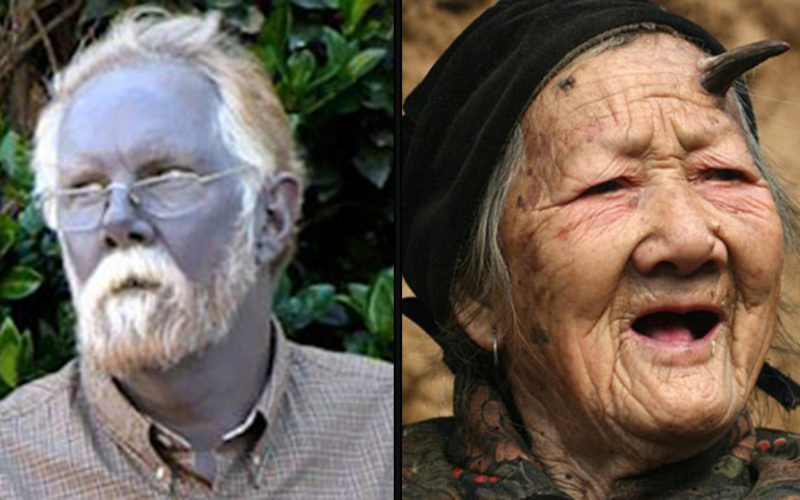- 1.4Kshares
- Share
- Tweet
- Facebook Messenger
We are aware of so many medical conditions. When most people think of a medical condition, they typically don’t imagine maggot infestations in someone’s mouth or people whose skin resembles the bark of trees. Some of us may suffer from the occasional acne breakout, restless leg syndrome or allergy attacks, but as annoying as these things may be, they don’t compare to any of the afflictions that result into an unusual physical appearance.
The rare and little-understood medical conditions these people suffer from, baffle even the most renowned specialists, and for many of them, there is no known cure-all treatment. Let us look at these rare diseases one by one.
1. Cotard’s Delusion (Walking dead syndrome)

Nicknamed “Walking Corpse Syndrome”, it is a disorder in which the person truly believes that they are dead, or that they do not exist or have had all their blood and organs removed. Cotard’s syndrome or Cotard’s delusion comprises any one of a series of delusions ranging from the fixed and unshakable belief that one has lost organs, blood, or body parts to believing that one has lost one’s soul or is dead. Doctors found that a patient who suffered from Cotard’s syndrome had a brain function which resembled that of someone who was in a coma, despite him being on his feet, and interacting with people.
2. Epidermodysplasia Verruciformis (Tree bark skin disorder)
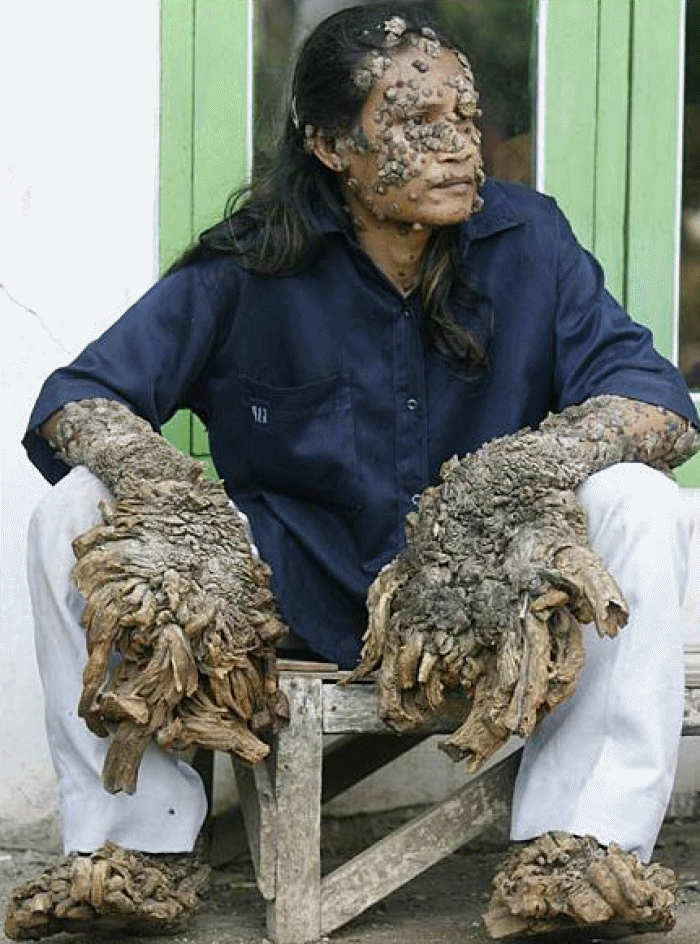
This disease is called Tree Bark disorder because the patient suffering from this disease tends to grow tree roots and bark all over his/her body. It is an extremely rare genetic disorder that happens because of a high risk of carcinoma in the skin. No serious treatment against this has been found yet. Several treatments have been suggested and out of them, Acitretin for 6 months’ duration is the most effective treatment owing to antiproliferative and differentiation-inducing effects.
3. Xeroderma Pigmentosum (Vampire effect)

We have all been a fan of Vampire Diaries and I’m sure after watching it, we have wondered – Are they for real? The answer is yes. This medical condition is known as the Vampire Effect.
There are people out there who go to great lengths to avoid the sun. If they are caught in the sun, their skin will blister. Some of them have pain and blistering as soon as the sun touches their skin. Ok, so they’re not actually vampires. They don’t drink blood and sleep in coffins, but they do suffer from a rare disease that has vampire-like symptoms. The most obvious, and important part of treatment, is avoiding exposure to sunlight. Fewer than 40% of individuals with the disease survive beyond the age of 20.
4. Alien Hand syndrome

The feeling that one’s hand is possessed by a force outside of one’s control. The syndrome typically arises after trauma to the brain, after brain surgery or after a stroke or an infection of the brain. A person with the alien hand syndrome can feel sensation in the affected hand but thinks that the hand is not part of their body and that they have no control over its movement and that it belongs to an alien. There is currently no treatment for Alien hand. All a patient can do to control the problem is to keep the hand busy by having it hold an object.
Less horrifying symptoms include involuntary reaching and grasping, touching the face or tearing at clothing. More extreme cases have involved involuntarily stuffing food in the mouth, preventing the normal hand from completing simple tasks and self-inflicted punching or choking. While it’s viewed as more of a nuisance than a medical threat, its sufferers often experience psychological problems.
5. Hypertrichosis (Were Wolf Syndrome)
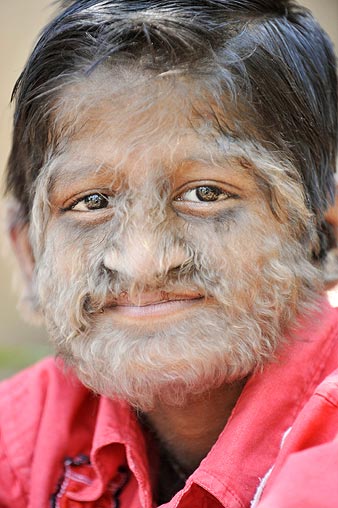
This is a medical condition where an abnormal amount of hair growth all over the body (including the face). The disease is called werewolf syndrome because people infected with it look like werewolves – except without the sharp teeth and claws. There are two different types of hypertrichosis. One of them is generalized hypertrichosis, which occurs over the entire body and localized hypertrichosis, which is restricted to a certain area. The primary characteristic of all forms of hypertrichosis is the excessive hair. Hair in hypertrichosis is usually longer than expected.
6. Progeria
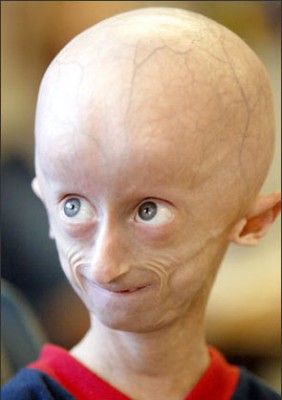
This is an extremely rare genetic abnormality that ages kids quickly, from his/her first two years of life. Progeria is caused by a single tiny defect in a child’s genetic code, but it has devastating and life-changing consequences. On an average, a child born with this disease will be dead by the age of 13. As they see their bodies fast forward through the normal process of aging, they develop striking physical symptoms, which often includes premature baldness, heart disease, thinning bones and arthritis. Progeria is extremely rare. There are only around forty-eight people living with it in the whole world. A child may look like an 80-year-old man.
7. Blue man Syndrome
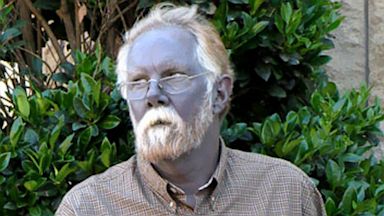
In this disease, the person starts turning blue. This is due to a deficiency enzyme, leading to a higher level than normal of methemoglobin in the blood and a reduced oxygen-carrying capacity. There is less oxygen in the blood, which is brown instead of red, and the skin turns blue instead of white. The mutation is hereditary and carried on a recessive gene. The main symptoms are shortness of breath, fatigue, headache, dizziness and mental status changes. Severe methemoglobinemia can lead to seizures, coma, and death.
A large family simply known as the “blue people” lived in the hills around Troublesome Creek in Kentucky until the 1960s. They were the blue Fugates. Most of them lived past the age of 80, with no serious illness but just blue skin.
8. Fibrous dysplasia
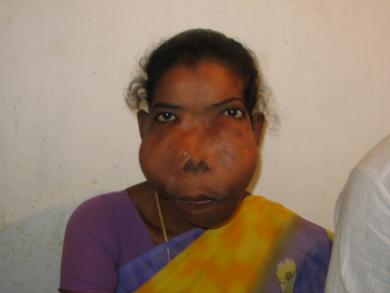
Fibrous dysplasia is an uncommon bone disorder in which scar-like (fibrous) tissue develops in place of normal bone. This can weaken the affected bone and cause it to deform or fracture. In most cases, fibrous dysplasia affects only a single bone — most commonly the skull or a long bone in the arms or legs. This variety usually occurs in adolescents and young adults. People who have more than one affected bone typically develop symptoms before the age of 10.
Fibrous dysplasia is a genetic disorder and there’s no cure. Treatment, which may include surgery, focuses on relieving signs and symptoms.
9. Cutaneous Horns

These are unusual skin tumours with the appearance of horns. It is a clinical diagnosis referring to a conical projection of cornified material above the surface of the skin that resembles a miniature horn. Historically, it is also referred to by its Latin name, cornu cutaneum. They are usually small and localized, but in rare cases, can be much longer. The component causing this disease is still unknown, but it is believed that prolonged exposure to radiation can result into this. The horn can be simply cut by a sterile razor.
10. Cutis Verticis Gyrata (Brainy Scalp)

In this disease, the scalp resembles the surface of the brain. Hence, it’s colloquially known as Brainy Scalp. The condition was first described by Alibert in 1837. This is usually associated with the thickening of the scalp. Or, there can be visible folds, creases or ridges. It may result in hair loss because of the hair thickening. There is no such cure for this disease. Only plastic surgery is a way out.
Fact Source
There! Here are the weirdest medical conditions. These are very rare diseases. Very few people are said to have this. And you thought your common cold was troubling you!
- 1.4Kshares
- Share
- Tweet
- Facebook Messenger




